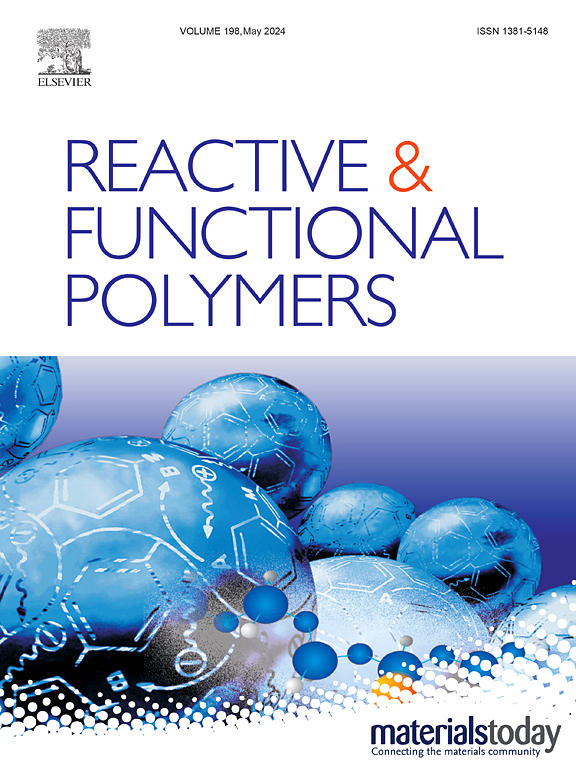Structure optimization of epoxy MQ silicone resin for excellent transparency, wear resistance, and anti-smudge coatings
IF 4.5
3区 工程技术
Q1 CHEMISTRY, APPLIED
引用次数: 0
Abstract
The demand for high-transparent functional coatings with excellent hardness and excellent anti-smudge properties has increased significantly, especially for display devices such as smartphones and tablets. In this work, epoxy MQ silicone resins with different epoxy values were synthesized by sol-gel method and hydrosilylation reaction, and then cured with methyl hexahydrophthalic anhydride to obtain an organic-inorganic hybrid coating with extraordinary transparency (99.3 % at 550 nm) and high hardness (0.21 GPa). By introducing fluorocarbon chains into MQ silicone resin, the surface energy of the coating is reduced from 31.9 ± 0.5 mJ/m2 to 23.1 ± 0.3 mJ/m2 and the water contact angle is increased from 84.0° to 107.9°, showing excellent self-cleaning properties while maintaining good mechanical properties (hardness, 0.19 GPa) and excellent transparency (98 % at 550 nm). Moreover, the coating could maintain its outstanding performance after 100 cycles of steel wool abrasion or heating at 60 °C for 60 h. Therefore, this work provides insights into the fabrication of multifunctional coatings integrated with high transparency, wear resistance, as well as anti-smudge properties for touch screens.

环氧MQ有机硅树脂的结构优化,具有优异的透明度,耐磨性和抗污涂层
对具有优异硬度和优异抗污性能的高透明功能涂料的需求显著增加,特别是智能手机和平板电脑等显示设备。本文采用溶胶-凝胶法和硅氢化反应合成了不同环氧值的环氧MQ型有机硅树脂,然后用六氢邻苯二甲酸甲酯固化,得到了具有优异透明度(550 nm处99.3%)和高硬度(0.21 GPa)的有机-无机杂化涂层。通过在MQ有机硅树脂中引入氟碳链,涂层的表面能从31.9±0.5 mJ/m2降低到23.1±0.3 mJ/m2,水接触角从84.0°增加到107.9°,在保持良好的机械性能(硬度0.19 GPa)和优异的透明度(550 nm时98%)的同时,表现出优异的自清洁性能。此外,经过100次钢丝绒磨损或60°C加热60小时后,涂层仍能保持其出色的性能。因此,这项工作为制造具有高透明度,耐磨性和防污损性能的触摸屏多功能涂层提供了见解。
本文章由计算机程序翻译,如有差异,请以英文原文为准。
求助全文
约1分钟内获得全文
求助全文
来源期刊

Reactive & Functional Polymers
工程技术-高分子科学
CiteScore
8.90
自引率
5.90%
发文量
259
审稿时长
27 days
期刊介绍:
Reactive & Functional Polymers provides a forum to disseminate original ideas, concepts and developments in the science and technology of polymers with functional groups, which impart specific chemical reactivity or physical, chemical, structural, biological, and pharmacological functionality. The scope covers organic polymers, acting for instance as reagents, catalysts, templates, ion-exchangers, selective sorbents, chelating or antimicrobial agents, drug carriers, sensors, membranes, and hydrogels. This also includes reactive cross-linkable prepolymers and high-performance thermosetting polymers, natural or degradable polymers, conducting polymers, and porous polymers.
Original research articles must contain thorough molecular and material characterization data on synthesis of the above polymers in combination with their applications. Applications include but are not limited to catalysis, water or effluent treatment, separations and recovery, electronics and information storage, energy conversion, encapsulation, or adhesion.
 求助内容:
求助内容: 应助结果提醒方式:
应助结果提醒方式:


